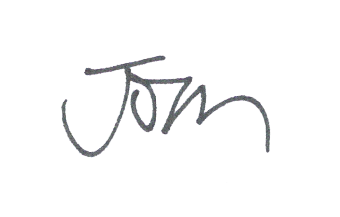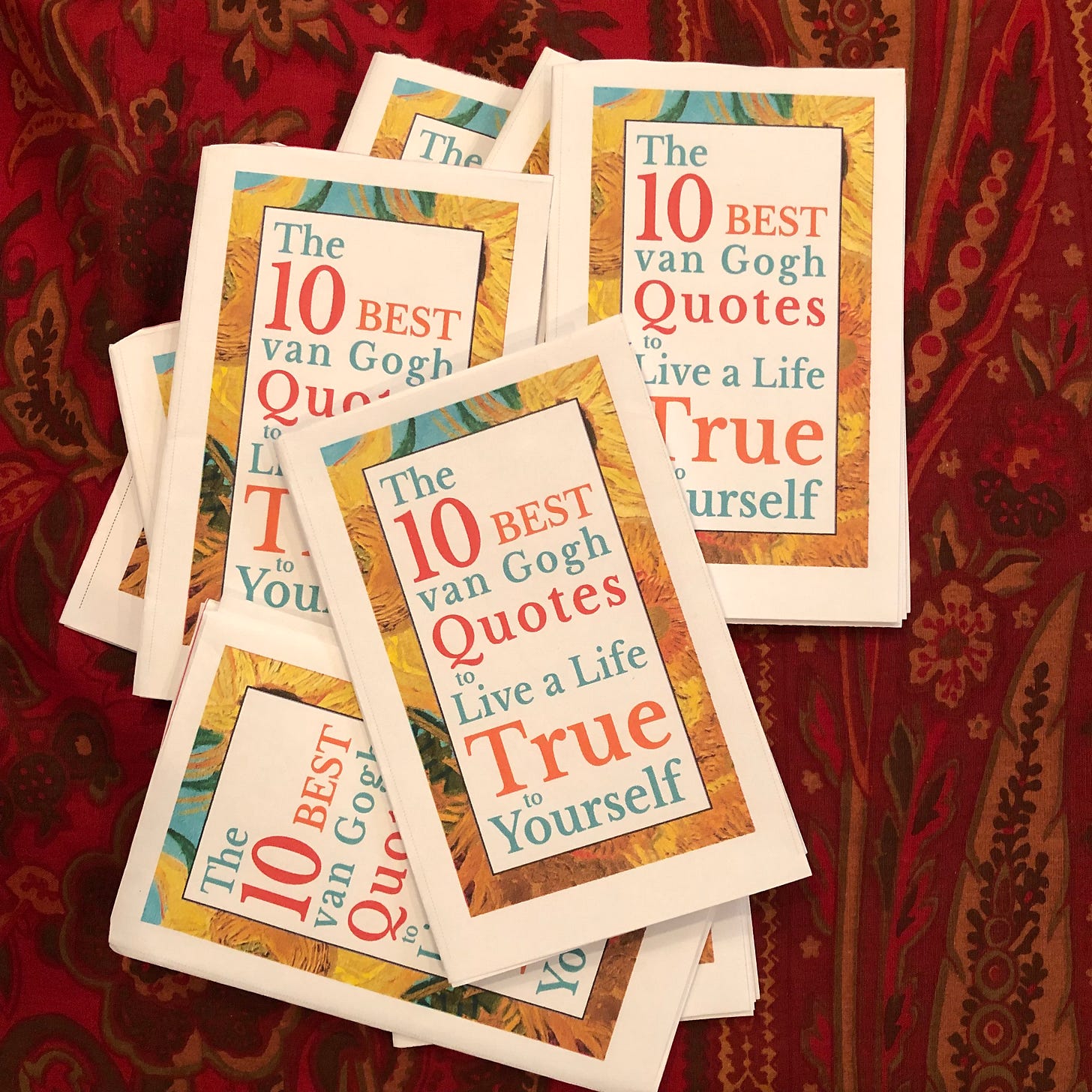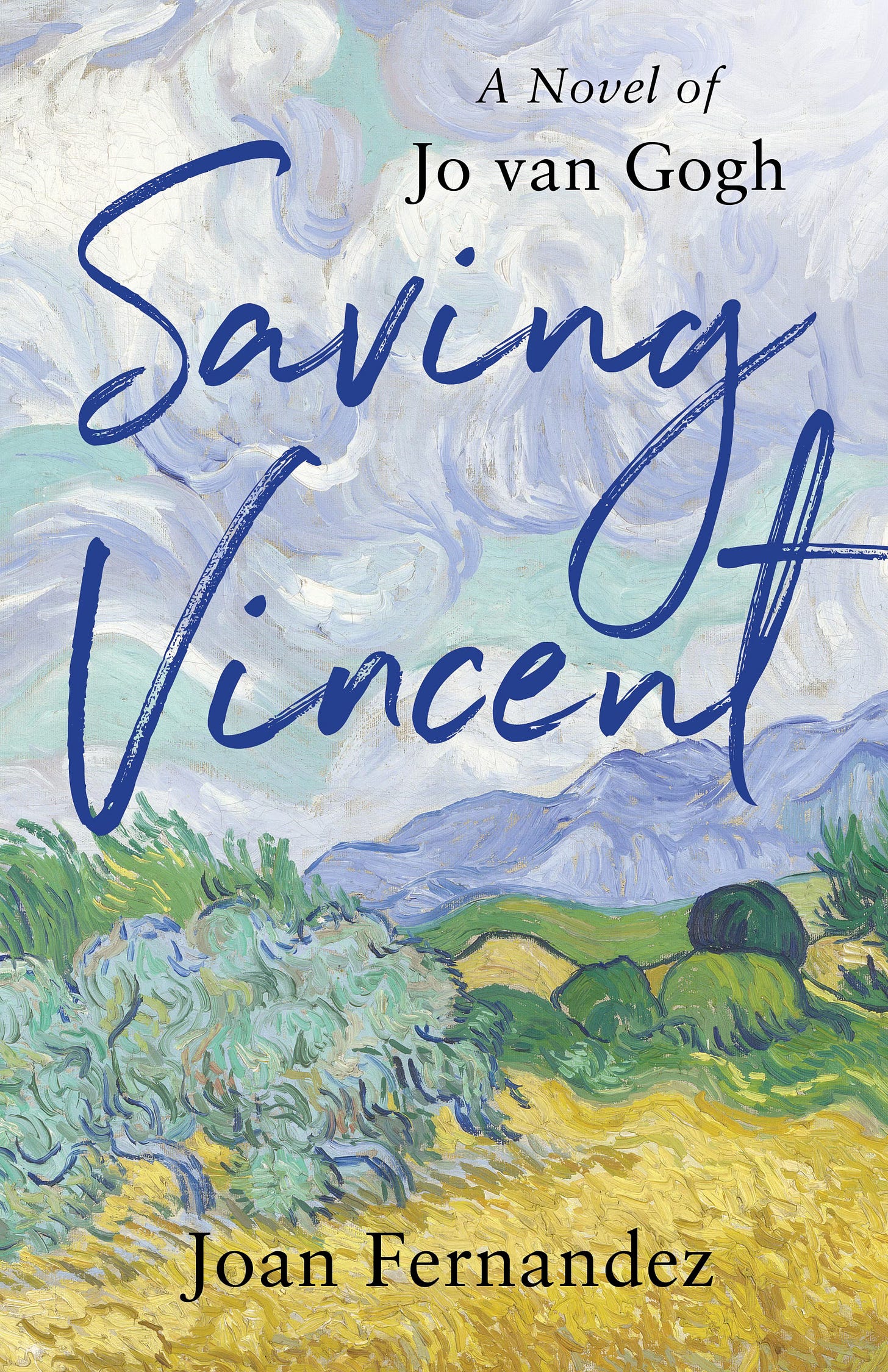How Truth Is a Controlled Burn
When One Woman's Storytelling Made Van Gogh a Legend
Digging in with Joan Fernandez is a weekly newsletter with ideas for you on shattering limits to reaching your true potential, told through bits from the life of Jo van Gogh (the woman that would not allow Van Gogh to die twice). Please sign up here.
Here’s the thing about truth.
It’s powerful.
Like the controlled burn to reduce underbrush, truth clears clogged ecosystems, torches tangled opinionated habitats and clears the space for new pathways and budding ideas where entrenched rhetoric had crowded them out.
People like us believe that progress means going forward, not back. Welcoming the challenge of releasing outworn assumptions.
Learning as we go.
What tool can help with truth-telling?
It turns out letters are a good weedwacker.
Jo Humanizes Vincent by Sharing His Letters
Do you recall the first Van Gogh quote you came across? Once I started researching my book, my VG radar constantly crackled —t-shirts, hoodies, mugs, throw pillows, book inscriptions. Vincent could turn a pithy phrase. Here’s one:
The greatest and most energetic people of the century have always worked against the grain.
Gives us quirky kids a little hope.
I’ve collected a treasure trove of Vincent’s sayings*. In 2018, the first year of working on my book, my husband gave me a sweet Christmas gift: a six-volume hard cover collection of VG’s letters produced by the Van Gogh Museum.
With a fresh highlighter in hand, I flipped from page to page, scouring a letter here, a footnote there, until one day I decided to stop skipping around.
To really get to know Vincent, I would need to read them all.
Nine hundred letters.
Ten letters/day.
Crazily, as I gradually made progress, I noticed a change. What started out as kinda clinical research warmed to. . . well, empathy. For Vincent began to come alive to me.
Crabby, passionate, witty, philosophical and deeply thoughtful.
Relatable.
Human.
Nothing at all like the labels slapped on him when he was alive: “mad,” “unstable,” “failed.” In turn, that negativity had judged his art as ugly and unfinished, blinding onlookers to his talent.
It would be the woman who changed art history—Jo van Gogh—who would correct this misperception. She had a genius for storytelling. By meticulously selecting and publishing Vincent’s letters, she revealed Vincent’s deeply thoughtful, passionate and philosophical nature to the public. The truth of who he was transformed his reputation as a troubled eccentric into a sympathetic genius.
And even more touching, because he shared his emotional and artistic struggles so honestly, he’s relatable, an example of an artist who struggled to express his unique vision and was unappreciated in his lifetime.
Thank heavens for all of us that Jo van Gogh took up a torch blower on the lies believed about him. Her genius in recognizing the man behind the troubled image would clear the way for his art’s consideration and, ultimately, sales.
Later, others would copy Jo’s strategy by publishing collections of Vincent’s letters as she had.
Once seen, truth catches on and spreads.
Women’s Equality Day
Since I’m publishing this essay on August 26, Women’s Equality Day, wouldn’t you know it brings to mind other examples of truth-telling proclamations.
Women’s Equality Day celebrates the certification of the 19th Amendment in 1920, which granted American women the right to vote. It’s also the anniversary of the 1970 Women’s Strike for Equality, a protest with tens of thousands nationwide, 50 years after suffrage.
This official day of recognition came about in 1971, when Congresswoman Bella Abzug introduced a resolution to designate August 26 as Women’s Equality Day. As a result, President Nixon issued the first proclamation in 1972. In 1973, Congress made it official. Since then, each U.S. president has issued a proclamation on the day.
Expanding on a Powerful Idea
One of my favorite examples of challenging false ideas is the story of women’s rights activist Elizabeth Cady Stanton. In 1848, Stanton and four others gathered to draft the Declaration of Sentiments to be read at the first Seneca Falls Convention.
The genius of this document is that it masterfully echoes the language, structure, and cadence of the beloved Declaration of Independence. By doing so, it didn't present women's rights as a radical new idea, but rather as the logical next step in America's ongoing quest for freedom and equality.
Notice its straightforward beginning:
We hold these truths to be self-evident: that all men and women are created equal.
This strategy had a brilliant and positive outcome: it forced the audience to confront a fundamental contradiction. By inserting "and women" into a hallowed American text—"We hold these truths to be self-evident: that all men and women are created equal"—Stanton and her co-authors made it impossible to ignore the hypocrisy of a nation founded on liberty that denied it to half of its citizens.
The use of familiar, revered language acted as a powerful rhetorical tool, framing women's rights not as a separate, niche issue, but as an essential and overdue part of the nation's core principles. This approach was highly effective, positioning the women’s rights movement as both patriotic and essential to the country's ideals.
Fifty years earlier one of the founding figures of feminism, Mary Wollstoncraft, laid groundwork through her written words.
Published in 1792, Mary Wollstonecraft’s “A Vindication of the Rights of Woman,” informally laid the foundations of feminist philosophy. In fact, Elizabeth Cady Stanton cited her ideas as influential in her own work.
Wollstonecraft argued that women’s inferior status stemmed from a lack of education, not their inherent nature. Here are a few quotes:
I do not wish them [women] to have power over men, but over themselves.
and
Taught from their infancy that beauty is woman’s scepter, the mind shapes itself to the body, and roaming round its gilt can, only seeks to adorn its prison.
Mary Wollstonecraft's words burned away the rhetoric. And notice how they still ring true. She argued against the false idea that a lack of education—or in our time, a lower economic class—could be used as an excuse to assume that another individual is inherently inferior.
This is not truth.
A Common Thread of Truth
The lives of Vincent van Gogh, Elizabeth Cady Stanton, and Mary Wollstonecraft may have been separated by time and circumstance, but they are united by a singular, powerful belief: that truth, once unleashed, can dismantle falsehood and clear a path for progress.
Whether it was Jo van Gogh's meticulous curation of Vincent's letters, the deliberate echoing of the Declaration of Independence by Stanton, or Wollstonecraft's foundational arguments for education, each of these acts was a strategic and courageous use of words to reveal what was real and just.
Just as a controlled burn clears out dense underbrush, their truths burned away the tangled opinions and entrenched lies of their time. For Vincent, it was the lie of the "mad, failed artist." For women, it was the lie of their inherent inferiority. In both cases, the tools were simple yet profound: published letters and written declarations that used familiar language to force a re-evaluation of long-held beliefs. These powerful words not only humanized an artist and legitimized a movement, they proved that progress isn’t about inventing a new reality but about returning to the core truths that have been ignored.
When we face old ideas with new insights, we create a space for new growth and a path forward for all.
One of my favorite quotes comes to mind from Czech former president, Václav Havel, a leader in the nonviolent Velvet Revolution, which ended communist rule in 1989. Havel said:
Truth and love overcome lies and hatred.
Do you have a favorite quote you live by?
Warmly,
P.S. Thank you
for your recommendation of my book, Saving Vincent. Nicole said, “If you want a historical fiction book that will have you rooting for the main character the whole way through, you don’t want to miss this one.” Yay, Jo! Here’s the full review:P.S.S. As part of my centennial celebration of Jo on September 2, Today’s essay is No. 3 of a four-part series on Jo’s impact. Here are the first two essays: Vincent van Gogh's Enduring Influence on Modern Art, and Widow's Resolve: The Societal Norms Jo Shattered to Make History.
Book Recommendation: Engrossing Portrait of Mary Wollstonecraft
Order on N.J. Mastro's website.
Solitary Walker is an engrossing bio historical fiction about the extraordinary life of 18th century feminist icon Mary Wollstonecraft. On the page her rational, confident voice comes to life. I was intrigued by her independent critical thought—how she courageously argued and wrote about the equality of the sexes and the naturalness of sexual relations (outside of marriage) so contrary to her time. Drawn to the French Revolution front to witness firsthand what she believed would be the birth of a new republic, instead she had a front row seat to brutal retribution and the realities of political rivalry and guillotine for enemies of the state. Mastro’s meticulous research brings to life a heartbreaking tale of a brilliant mind who challenged societal norms. Her writing captures the personal anguish and utter betrayal of a broken heart. What an ending! I cried.
*Free Pocket of Inspiration
I collected my Top Best 10 Van Gogh quotes for you. Free on my website, click here to download a mini-poster or create a zine! I do a demo on how to make a pocket-size zine.








Wonderful essay! I’m amazed what your book has taught me from an amazing woman who I knew nothing about to an artist who struggled to get his beliefs across to looking at myself and ways to not give up my dreams. Thank you, Joan! 💜
Letters as weed whackers!! I love it! Nicely done, as always!